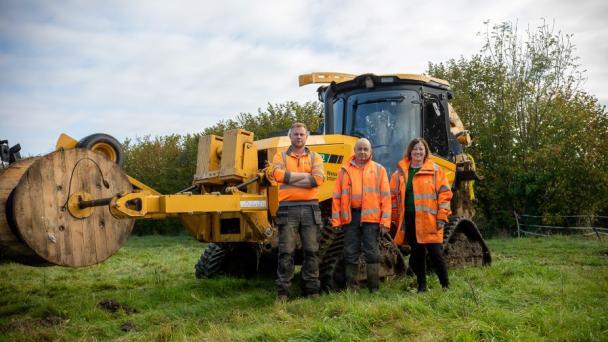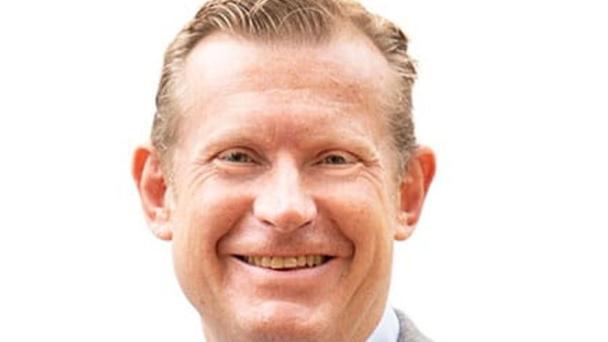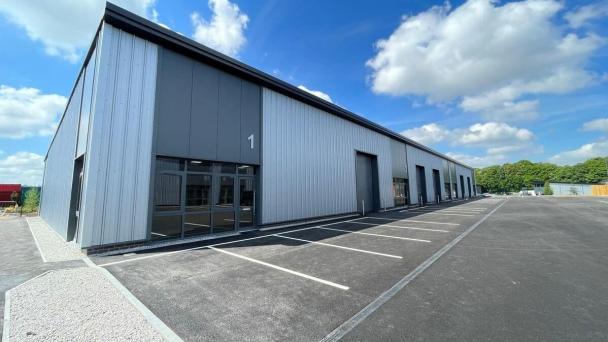A new 10-year strategy that “sits at the heart of plans to renew the UK” has been published by the government and will include proposals that are backed by £725bn in long-term funding for maintenance and major projects, which promises to “transform how infrastructure projects are planned and delivered”.

With a name lifted from the chants of local rugby fans, Ogi is hoping to carry the ball for Welsh connectivity by scoring further investment in 2022.
CEO Ben Allwright told Fibre Provider: “Our ambition is to accelerate the pace of our roll out significantly this year and attract further investment of hundreds of millions of pounds into Wales to reach 500k premises and beyond.
“It’s impossible to imagine how Government deadlines would be delivered without investment of hundreds of millions of pounds into local digital infrastructure from a company like Ogi. It is crucial that we can plug more fibre gaps at community-level and reduce the overall reliance on ageing technology.”
During phase one of its rollout Ogi reached more than 9,000 homes backed by investment from Infracapital.
Allwright said: “In the last 12-months we’ve helped drive a significant increase in full fibre rollout in Wales: which saw its highest increase in terms of coverage last year (from 19-27%) thanks in part to our contribution.”
Ogi has kicked off 2022 by announcing phase two, highlighting plans to begin building networks in Milford Haven, Johnston, Dinas Powys and Monmouth, with more communities soon to be added to the list in Pembrokeshire, the Vale of Glamorgan, Monmouthshire.
“As well as building in traditionally underserved communities, we’re also putting a resilient, future-proof backhaul network in place. A major part of that programme is our work on the south Wales Trunk Road. Ogi Networks Limited – part of our group of companies – won a concession from Welsh Government back in 2020 to access ducts along the region’s key highways to install fibre connectivity,” added Allwright.
The network will provide south Wales with vital long-distance backhaul connectivity, linking the area’s huge Data Centres for example. As well as providing connectivity benefits to south Wales, the work will provide meaningful wholesale opportunities.
“We are going beyond broadband too, as a business: providing managed IT service support to Wales’s business community remains a key pillar of our strategy. We want to work with iconic local businesses to help them innovate for the future and play our role in Wales’s post-Covid recovery.”
With its roots in south Wales Ogi retains a commitment to improving the region, investing £5-6m in each community it works in.
Allwright said: “When working in a town, there is an opportunity to collaborate with private-sector contractors and local skills providers to ensure that young people have the capabilities we need as an industry, and so that jobs can stay in our local build areas.
“This kills two birds with one stone. Skills need to be top of the agenda: we’re a sector that needs high-quality skills quickly, in a post-Covid Britain where it’s estimated that there’s a one million skilled worker shortage. Joining the dots so that local people can benefit from the roles we’re bringing to their areas would make a lasting contribution to the economies we’re all here to connect and serve.”
Working closely within a community also brings other benefits. Being a recognisable local brand ensures that people are familiar with the benefits of the service you are working to bring.
“Altnets have a responsibility to ensure people understand how this technology can better support their lives, at work and in their home lives. It’s less about ‘plug and play’ and more about raising awareness of the benefits full fibre can bring today and in the future,” said Allwright.
“It is hard for customers to keep up with advances in technology, and the sector certainly doesn’t make it easy for them to navigate the terms and options available to them. There’s a risk the whole industry will get caught out by the confusion it has created itself around ‘fibre’ in the next few years, and this presents an opportunity for us altnets to work together to get the message straight too.
The PSTN switch off is a major factor shaping the rollout strategy for altnets, however many businesses, particularly SMEs, are still not aware of this milestone deadline.
Allwright said: “We are bringing this next-generation full fibre technology to underserved communities, ensuring that when 2025 comes around, these places and their residents are ready for any future change.
“We, like all altnets, have a big role to play in communicating these complex changes to consumers. It’s fair to say that the messaging around fibre is exceptionally confusing. Our aim is to work with partners to educate and inform customers of their connectivity options and the fibre advantage and this will play a part in our engagement strategy from now through to the PSTN switch off ahead.”




